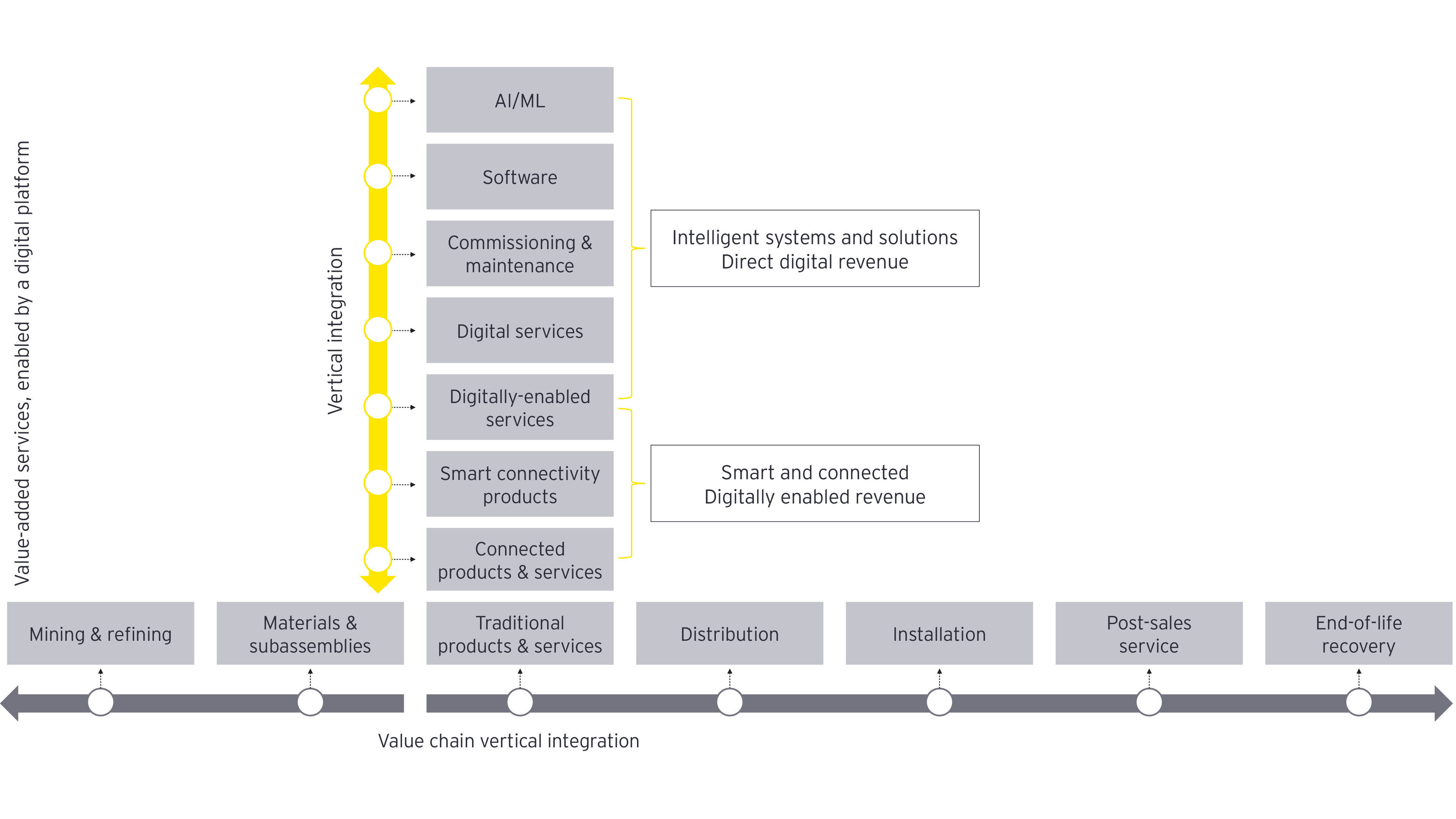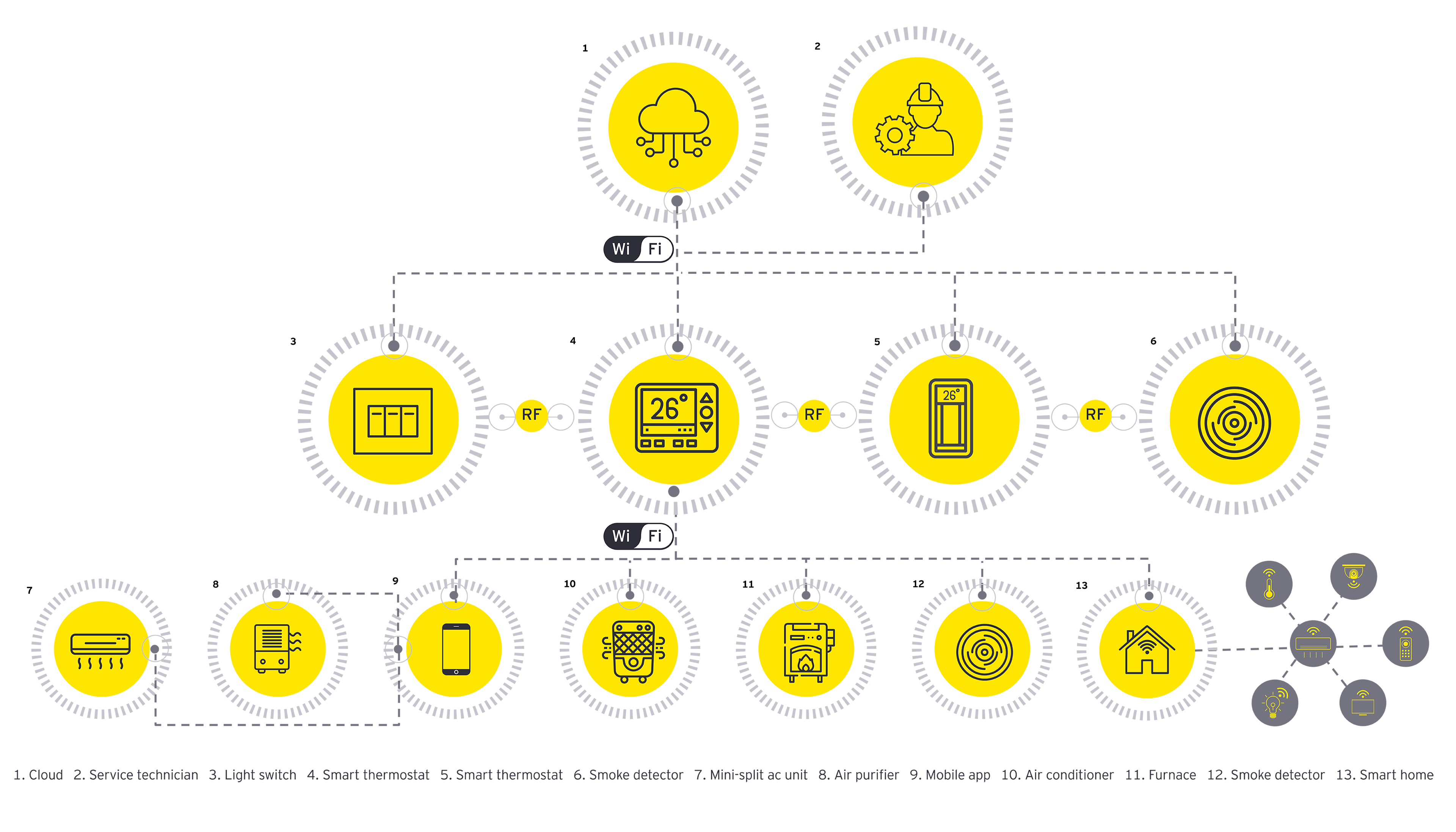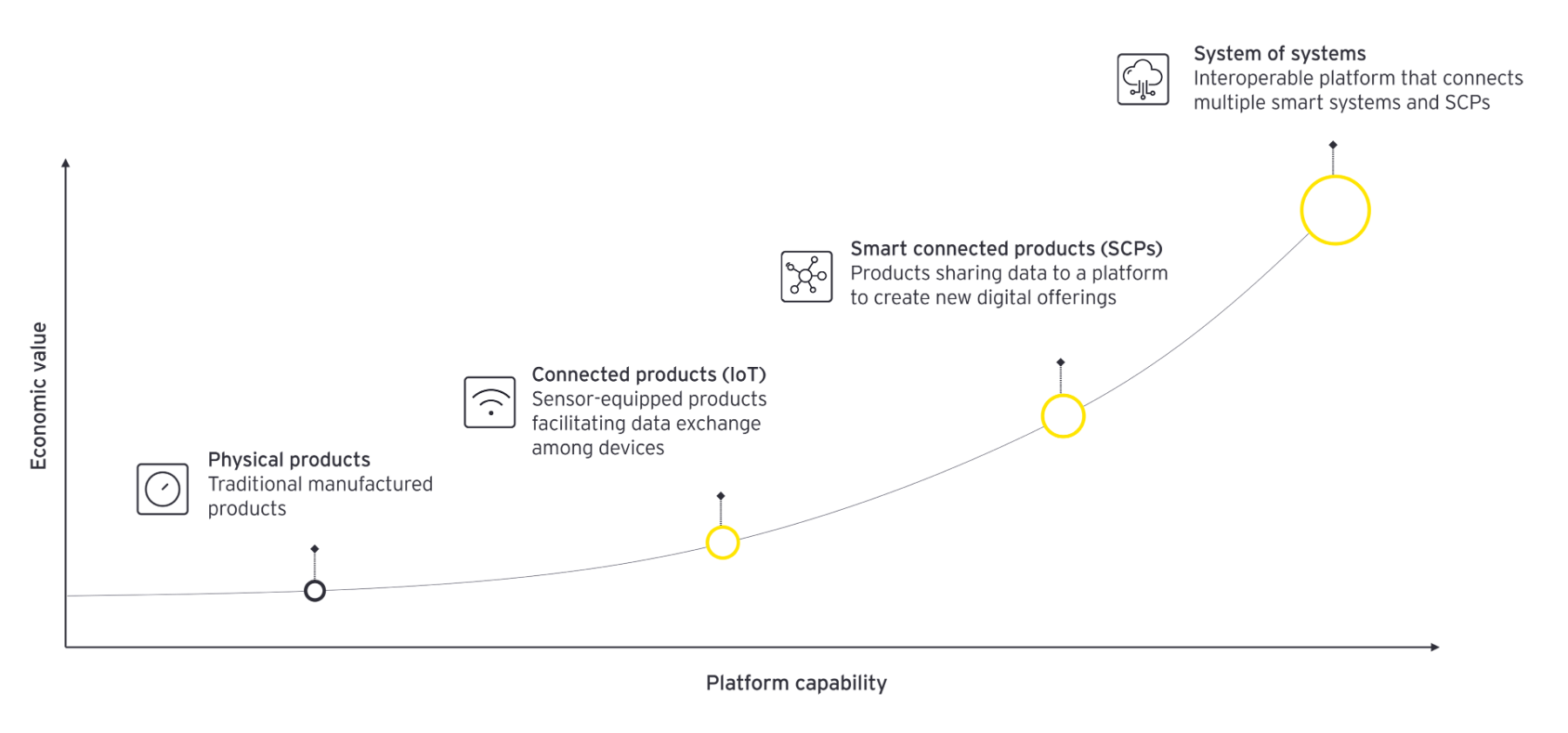2. Leverage multidisciplinary, agile pod teams
To achieve market viability, industrial manufacturers will want to deploy agile pod teams. Agile pod teams are self-organized and cross-functional (including researchers, designers, technologists, data scientists and business strategists), and work together to meet product goals. Team members collectively have the right skills to explore, create, incubate and activate smart connected products in the market.
By taking a multidisciplinary pod team approach to accelerate and de-risk the path to commercializing new business models, a US manufacturer of commercial water heaters and boilers was able to implement a flexible scalable and secure technology platform. The manufacturer developed value-engineered, smart connected water heater prototypes, and three new digital products around energy management and remote monitoring and serviceability. Using agile pod teams, the company reduced its time to market by 80% compared with its previous product development process.
3. Develop an end-to-end approach to commercialization fostered by ecosystems
Industrial manufacturers can create differentiated experiences through “signature moments” that address customers pain points for all players in the value chain through a new suite of digital solutions.
Industrial manufacturers can drive deep customer insights, comprehensive market fit, and scalable product development through four phases: explore, create, incubate and activate. It’s an approach that can deliver differentiated experiences, go-to-market opportunities, speed and agility, and paths to monetization, particularly when it is paired with an ecosystem-based approach, which is essential for competitive advantage in today’s market.
4. Bridge the revenue gap with a clear path to monetization
New products can take three to four years to monetize effectively enough to deliver a satisfactory ROI. Given that executive leadership tends to measure results in quarterly earnings, boards and C-suites are hesitant to invest.
Manufacturers must bridge the revenue gap with interim value creation opportunities as they build the vertical innovation smart connected product stack. Business units will need to demonstrate the value potential of the proposed smart connected products, with a clear path to monetization to secure board and C-suite buy-in.
Although data-driven applications of smart connected products, such as predictive maintenance and remote monitoring, have become must-haves rather than nice-to-haves, finding true paths to monetization will define success. This will require the right combination of traditional products, a specialized proposed product portfolio, and the right partners within a particular ecosystem. This gives manufacturers the best chance to successfully carve out their space in the market and build their smart connected product stack.












